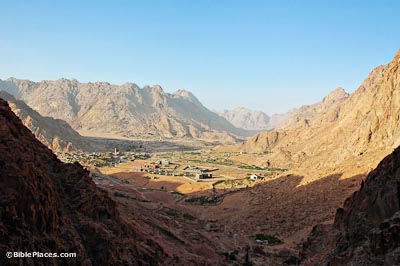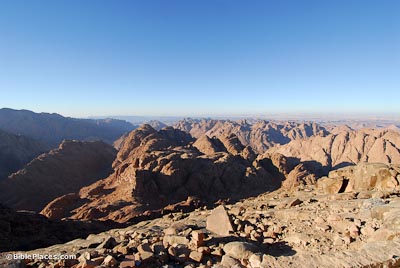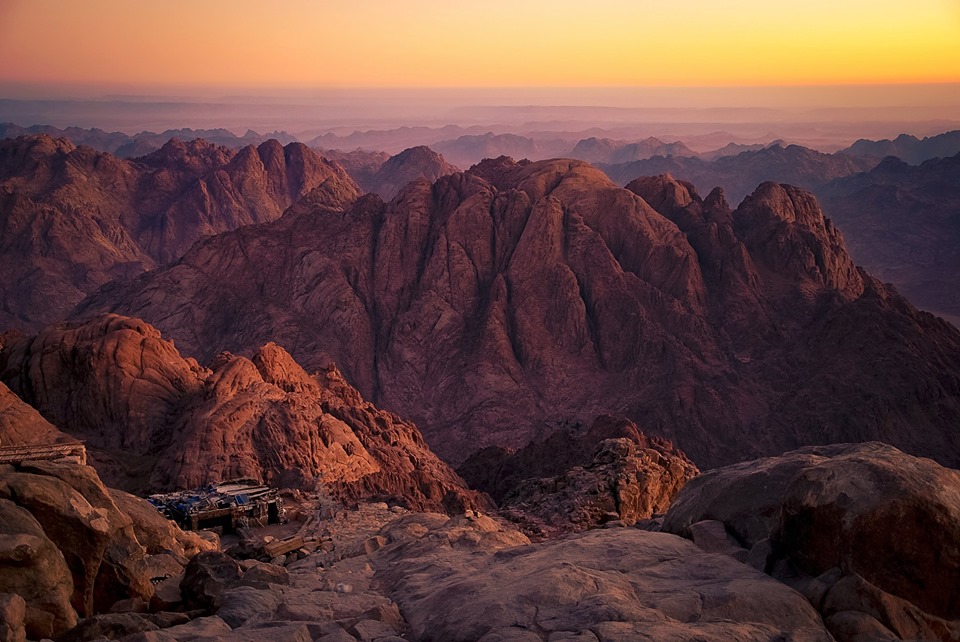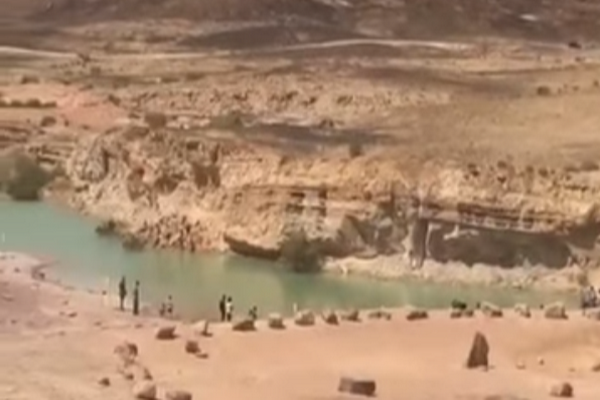『這些律例、典章和法度,是耶和華在西乃山藉著摩西與以色列人立的。』(利未記26:46)
西乃山(Mount of Sanai),又名為何烈山、摩西山。傳統認為聖經提到的西乃山位於西乃半島南部,是第二高卻最壯觀的山,其高度為2285公尺,正對著一個可容納多人聚集的大平原,附近有四條溪流和許多水井及水泉,可供應相當充分的水源,此山至今仍雜石崢嶸,山勢陡峻,攀登不易。目前在山之西北麓有一座五世紀時所建的修道院,東南麓有一些拜占庭時代所建的小教堂。
此山是頒賜律法的山,具有雙重的意義。首先,它是何烈山,乃是神的山,就是尋求神的人彼此相會、與神相會、事奉神、得著神的啟示和異象、並被神的本質注入的地方。第二,它是西乃山,乃是暴露神百姓的罪,並啟示神的聖別界線的地方。
“These are the statutes and ordinances and laws which Jehovah made between Himself and the children of Israel at Mount Sinai through Moses.” (Leviticus 26:46)
Mount Sinai (Hebrew: הַר סִינַי), also called Mount Horeb and Mountains of Moses, is the mountain at which the Ten Commandments were given to Moses by God. Traditional references to Mount Sinai being located in the present day Sinai Peninsula are still inconclusive.
Horeb is thought to mean “glowing/heat”, while Sinai may have derived from the name of “Sin”. The mountain where the law was given has a two fold significance. First, as Mount Horeb, it is the mountain of God, the place for God’s seekers to meet with one another, to meet with God, to serve God, to receive God’s revelation and vision, and to be infused with God’s substance. Second, as Mount Sinai, it is the place where the sinfulness of God’s people is exposed and the boundary of God’s holiness is revealed.



Source: https://web.facebook.com/kokiahouse/posts/2313435322244295?_rdc=1&_rdr



